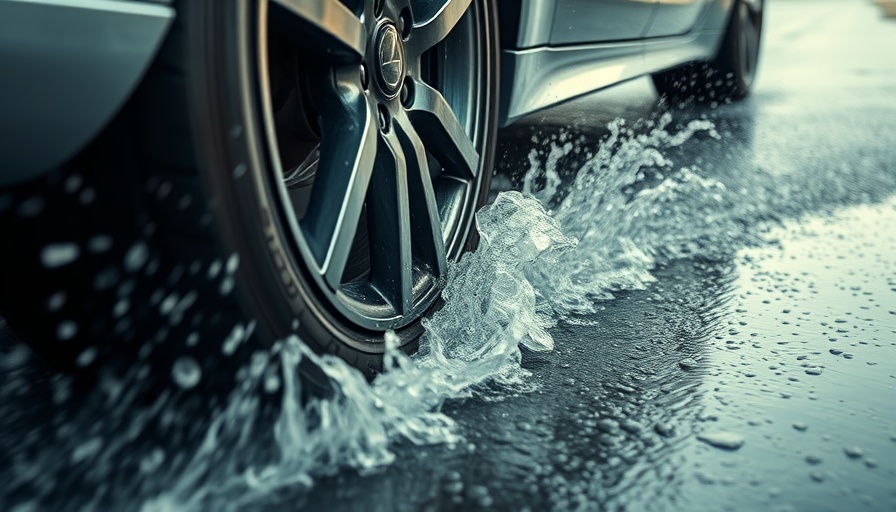
Understanding Hydroplaning and Its Dangers
Hydroplaning can be a driver’s worst nightmare. When it occurs, it becomes incredibly difficult for you to maintain control over your vehicle. Hydroplaning happens when water beneath your tires exceeds the tire's ability to displace it, leading to a loss of traction. Not only does this pose significant risks while driving, it can also happen on surfaces like mud or snow. The severity increases dramatically during wet weather, making it vital for all drivers to grasp the key factors influencing hydroplaning.
The Top Causes of Hydroplaning
The primary culprit behind hydroplaning is the water itself. Roads that are waterlogged or flooded create a dangerous setup where tires can glide over puddles instead of gripping the surface. However, several other factors can exacerbate these conditions:
- Oil on the Roadway: Following periods of dry weather, oil leakage can accumulate on the road's surface. The very first rain can create a slippery layer that drastically increases the risk of hydroplaning.
- Weather Conditions: Speeding in wet conditions is a huge risk factor. When drivers go too fast, a tire’s ability to push water out from under its tread effectively diminishes.
- Worn or Poorly Inflated Tires: Tires with low tread depth cannot channel water effectively, while underinflated or overinflated tires reduce contact with the road surface, seriously hampering traction.
- Poor Road Quality: Smooth asphalt surfaces with inadequate drainage can trap water, making hydroplaning much more likely.
- Sudden Movements: Abrupt maneuvers in slick conditions can also increase the chances of hydroplaning, leading to a loss of control.
Preparing Yourself Against Hydroplaning
With clear insights into what causes hydroplaning, it’s time to consider how you can prevent it. One of the best remedies is anticipating adverse weather conditions and making necessary adjustments to your driving:
- Check Tire Condition: Regularly inspect your tires for tread wear and ensure they’re properly inflated. This small check can save you from serious accidents.
- Reduce Speed: Always drive slower when it's raining. Adjusting your speed not only enhances your control but also gives you more time to react if you start to hydroplane.
- Maintain a Safe Distance: Keeping a safe distance between your vehicle and others allows you more reaction time, which is crucial in slippery conditions.
- Avoid Sudden Movements: Steer clear of sudden braking or sharp turns when driving in wet conditions.
Real-Life Consequences of Hydroplaning
It's crucial to understand the human aspect of hydroplaning, as it can lead to serious accidents. According to statistics, hundreds of accidents occur each year as a result of drivers losing control on wet roads. For families, a single accident can lead to lifetime implications, not just financially, but emotionally as well. Therefore, by educating yourself and adjusting your driving practices, you significantly contribute to road safety.
Future Trends in Automotive Safety
As technology evolves, so does the opportunity for improved vehicle safety features. Cars equipped with advanced systems can help analyze road conditions and even slow down automatically in hazardous weather. Meanwhile, consumer awareness of such technologies plays a pivotal role in reducing hydroplaning accidents. Stay informed about your vehicle's capabilities and invest in modern safety features that can make a difference.
Taking Action: Proactive Steps for Safer Roads
By understanding the risks associated with hydroplaning and the techniques to mitigate these dangers, drivers can make proactive choices every time they hit the road. This isn't just a matter of personal safety but a broader commitment to the well-being of everyone sharing the road.
As we navigate fluctuating weather patterns, let’s stay informed and be proactive. Your safe driving is essential—not just for you, but for the community at large.
 Add Row
Add Row  Add
Add 




Write A Comment